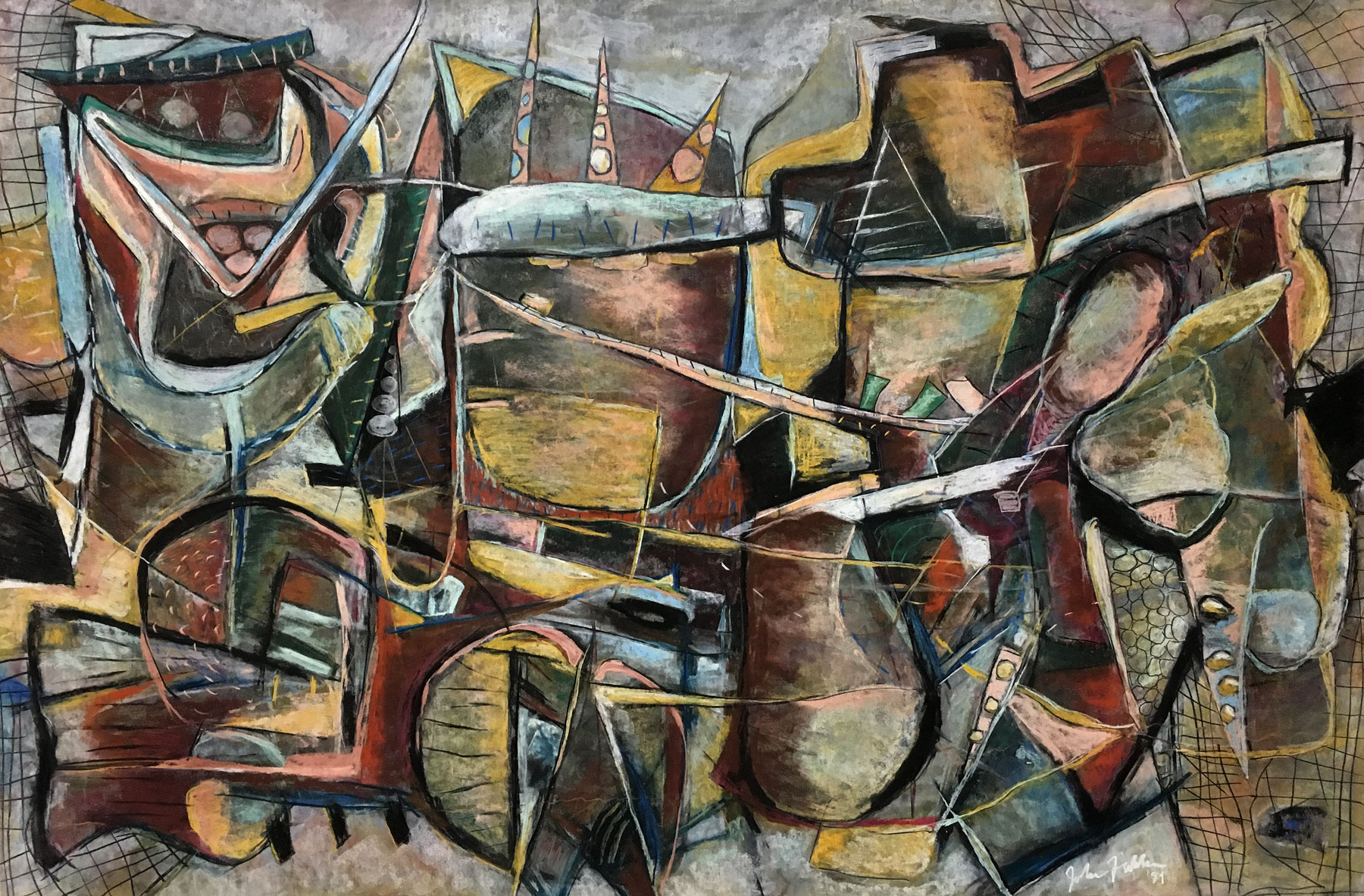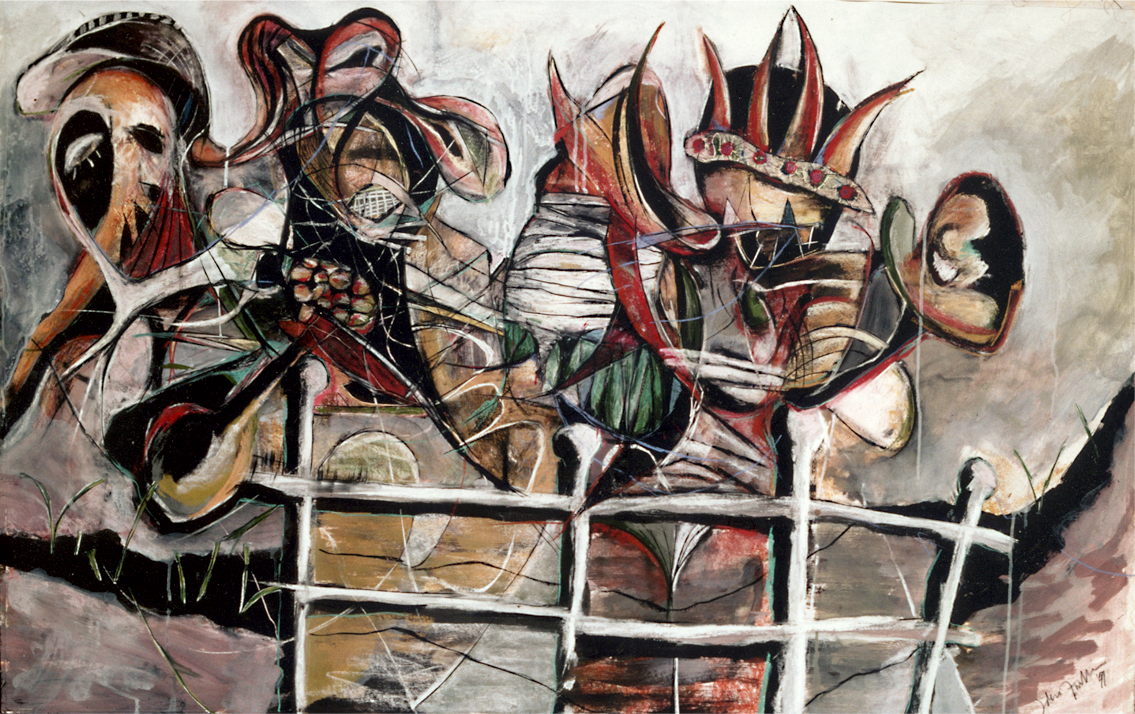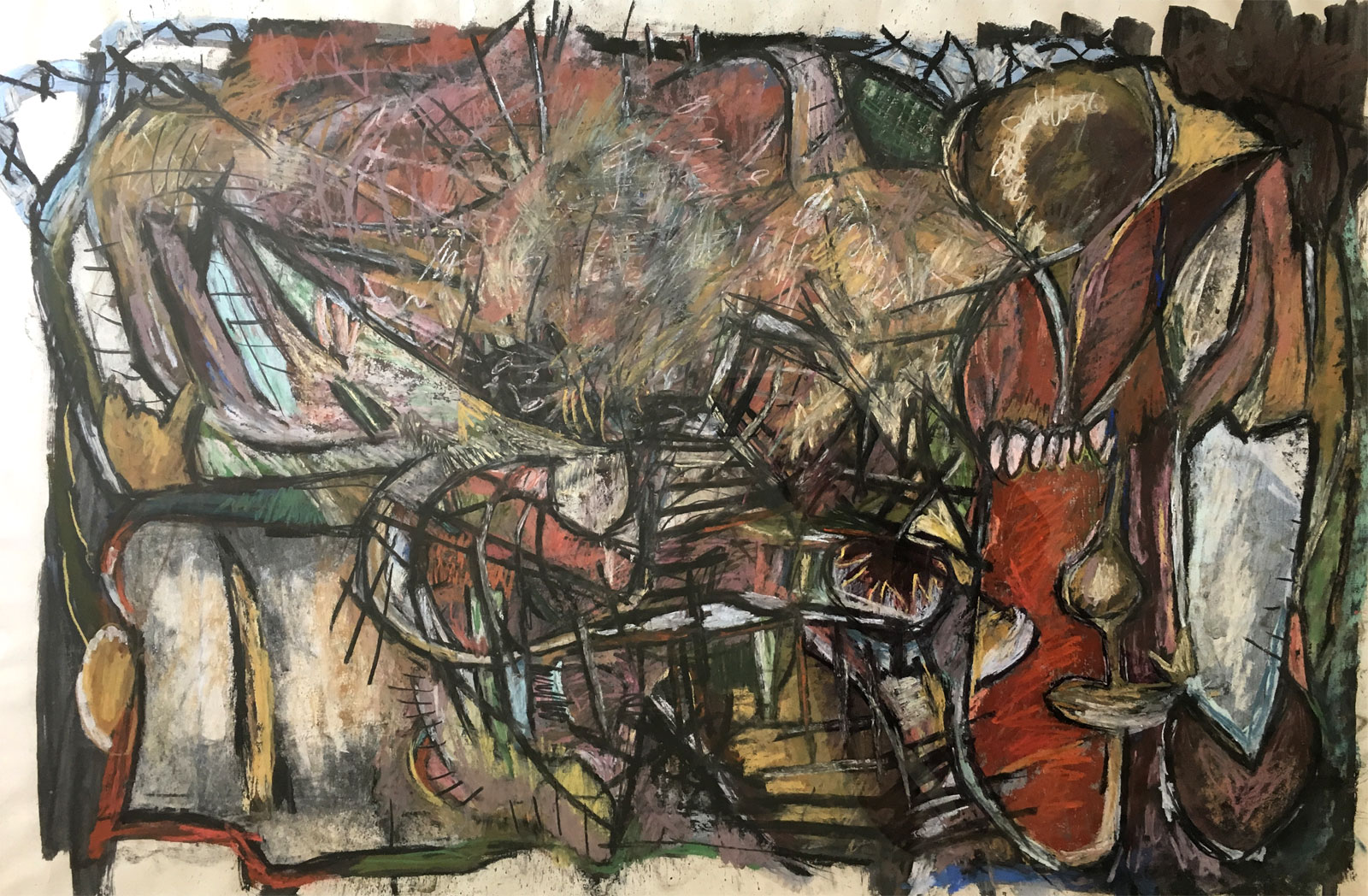
About
"Year after year, I see your pieces at the state fair–very free and refreshing after all the melodramatic oil paintings of roosters, pencil drawings of morose teenagers, and lucky snapshots of Buddhist monks. Keep up the good work!"
My father is an artist from Chicago, and professor for many years. He's the real artist of the family. His talent got him a summer scholarship at the Art Institute of Chicago in his teens to study drawing, and a long career as a professor and artist. I've been asking myself over the years if having an artist-father (he was always a father first) made it easier or harder for me to become an artist. The answer is really both, easier and harder. Easier because of his support and mentorship, and having lived with his abstract paintings on the wall my entire life, abstraction was familiar to me. There's a typical family photo of me opening presents on Christmas morning as a kid, and in the background this huge, wonderful abstract painting. Not every kids life. But, it was also harder. How do you move forward with your art when it's so far behind what he is doing? It can be especially crippling early on when your work is so woefully undeveloped by comparison. But you get over that, and eventually, just go about your own business. Back in the 1980's, he was doing these paintings playing off the Northern Renaissance painter Jan Van Eyck's, Arnolfini Wedding Portrait. I remember walking into one of his shows at a local college, and my mind was blown. They were so good, so expressive, and I think, in the end, the effect on me was to give me the courage to pursue an art of my own. And now, many years later, how forever grateful I am to have shared this experience of making art with my father.

I got a late start, it was the middle of the '80's that I began thinking seriously about the idea of making art. I had a lot of ground to make up. I had over 200 college credits in a couple of different majors before I even started taking art classes, but I had been veering towards the liberal arts for a while. By 1985, my brain was officially set on fire with Art. I read like crazy, Kafka, philosophy, Proust, the Russians (Turgenev, Dostoevsky, and Tolstoy), checked out a foot high stack of books on artists from the library on a weekly basis, and toted them them home on my bike rack.

I went to Moorhead State University, and studied with Professors, Timothy Ray and Carl Oltvedt. In our second year, we had to do a full-size drawing of a female skeleton, both a newsprint study, and final drawing, I'm still recovering from that. In the Fall of 1987, I remember, my mid-program review was not going all that well as we were looking at my life drawing studies, and snippets of other work from my classes, until I opened up a portfolio of drawings I had been doing on my own. Chairperson P. Richard Seitz face suddenly lit up as I pulled out my pastel drawings, and a wry smile went across his face as if to say, now we're talking! One of his comments that day was, "keep the sensitivity of your line," in his Hungarian accent. Suddenly, we had some energy in the room. To my utter astonishment, the committee loved this group of pastels I had been working on over the summer, and they were happy to approve me into the BFA program. I was officially off and running.


The 90's began with me in the middle of a Master's program at Eastern Illinois University. The piece called, A Last Stand, a large pastel drawing was probably the first piece I ever had in a competitive art show. It was a show at Northwestern University in Evanston, IL. I framed it, loaded it into a cardboard box and mailed it with money from my teaching stipend. A week later, I received a call from the gallery saying that the drawing arrived with the plexi-glass smashed, but they would show it without the glass. I've since refined my shipping technique.
After finishing up at Eastern Illinois University with a Masters of Art, I headed back home, moving to Minneapolis. Created in the basement of my Uptown apartment building, the large drawing titled, The Posse, 1991, was the first time I combined acrylic and pastel in my work. The picture is of 4 dastardly characters up to no good, a theme that never seems to go out of style.
After a few years of working 2 and 3 part-time jobs, and painting in my "free" time, I decided to pursue Graphic Design, so went back to college for that. But before my attention was taken away from art-making for a while, I landed in a show at the Minneapolis Institute of Art. So, was absolutely tickled that at least once in my life, I got to walk into the Institute, and see one of my paintings on the wall.
